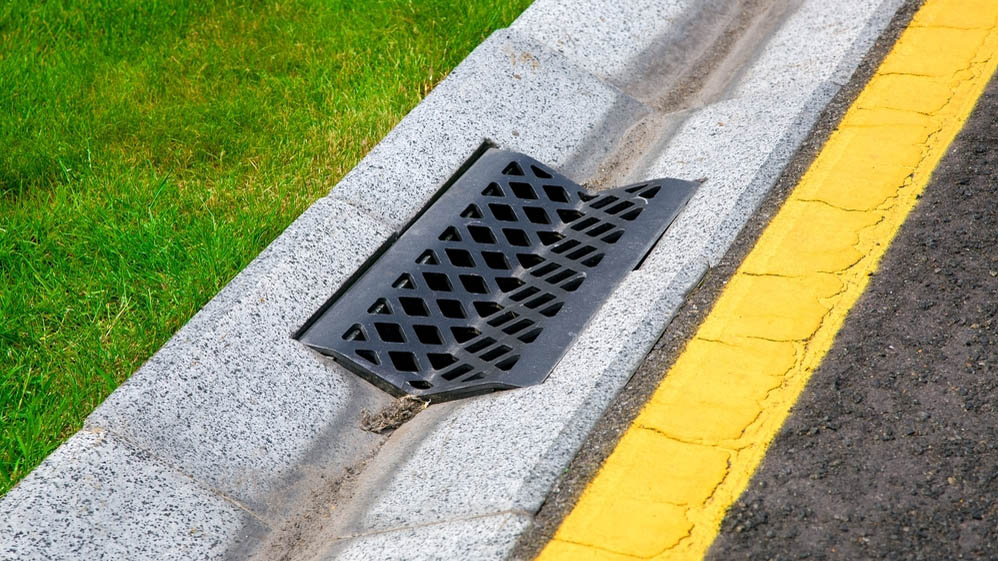Here’s how much you should water your lawn to keep it green according to the experts
Find out how much should you water your lawn for greener results

Summer is here and our once-green lawns are starting to look parched. And while you can beat the heat with these lawn watering tips, you’ll also need to know how much should you water your lawn to keep it green.
A common assumption is that lawns need constant soaking to revive dead grass, and keep it green. However, overwatering can do more harm than good, creating fungal diseases to the soil, and encouraging an abundance of weeds and dandelions. In addition, too much water will suffocate your lawn and stunt the root growth. That’s why it’s so important to know how much you should water your lawn to keep your grass greener and in tip-top condition. So, before you switch on the sprinklers, follow these top tips for a healthy lawn.
So, here's how often you should water your lawn in a heatwave, according to experts and how to save water in you yard this summer. Ever wondered which is better for your lawn; sprinkler versus hose? We have the answer. Plus, here are 7 flood-tolerant plants to protect your yard from heavy rain.
Note that there are some locations in the U.S. that have water restrictions in place due to drought so be sure to follow local guidelines.
How much water does a lawn need?

According to the experts, a lawn needs about an inch of water once per week to thrive, and keep it green. So how do you know if you’re giving your lawn the right amount of water? A common method is to place an empty can or container with straight sides under the sprinkler. Once this has filled up to a depth of an inch, that’s when you turn the sprinkler off. "Make sure you’re getting between 1-1.5 inches of water on the lawn each week", advises Craig Elworthy, founder of Lawnbright ."A simple rain gauge is all you need. Some even use a coffee mug and a ruler. It doesn’t have to be overly precise."
Another way of checking this is by probing the soil with a stiff metal rod, stick or a screwdriver. The rod should move easily through the wet soil and then stop once it gets to the dry soil. But if the soil is tough to penetrate, then the lawn is parched and needs a good watering.
Look out for these 7 signs you’re overwatering your yard at the same time.
Get instant access to breaking news, the hottest reviews, great deals and helpful tips.
Check your grass type and soil

It’s also important to consider the type of grass you have, and its age. The two main types of grass are warm-season and cool-season. Typically, warm-season grass can be found in the southern states, and are more drought-resistant. Cool-season grass tends to be grown in more northern areas, and would require more water. With this type of grass, it’s advisable to break up the watering routine into 2-3 sessions. If you’re uncertain of the grass type you have, you can always ask at your local home department store.
In addition, there are two types of soil. Clay soil usually absorbs more water than sandy soil, which drains more quickly. So adjust your watering routine to suit your soil condition.
How do I know if I’ve overwatered my lawn?

A telltale sign that you've overwatered your lawn is when you see streams of water runoff down the lawn, or paving and into the drain. This means that the grass is no longer absorbing excess water, and essentially washing away any nutrients it needs. Other signs of overwatering include a squishy lawn, thatch, fungi or a sudden growth of weeds, which thrive on plenty of water.
When is the best time to water my lawn?

Knowing when the best time to water your lawn is equally important. It’s recommended that you water early in the morning — ideally before 10 AM — or late in the evening, when the temperatures are cool. If you water during hot periods of the day, or when the Sun is intense, most of the water will evaporate. As a result, this won’t absorb into the lawn, and keep it in a healthy condition.
In any case, always check its moisture level before you begin watering, and be mindful of sudden heat waves drying up your lawn faster.
In case you have over-watered your lawn, you might want to read our guide on how to fix a waterlogged lawn.
If you want to have the best backyard in the neighbourhood, learn how to stripe your lawn to make it look bigger. Or if you need to maintain your lush lawn, learn about how to plant grass seed to make your grass greener, how to overseed your lawn before winter hits and how to lay sod to upgrade your lawn.
You can also read our simple tips on how to rake leaves easily to keep your yard clean this Fall.

As the Homes Content Editor, Cynthia Lawrence covers all things homes, interior decorating, and garden-related. She has a wealth of editorial experience testing the latest, ‘must-have’ home appliances, writing buying guides and the handy ‘how to’ features.
Her work has been published in various titles including, T3, Top Ten Reviews, Ideal Home, Real Homes, Livingetc. and House Beautiful, amongst many.
With a rather unhealthy obsession for all things homes and interiors, she also has an interior design blog for style inspiration and savvy storage solutions (get rid of that clutter!). When she’s not testing cool products, she’ll be searching online for more decor ideas to spruce up her family home or looking for a great bargain!
